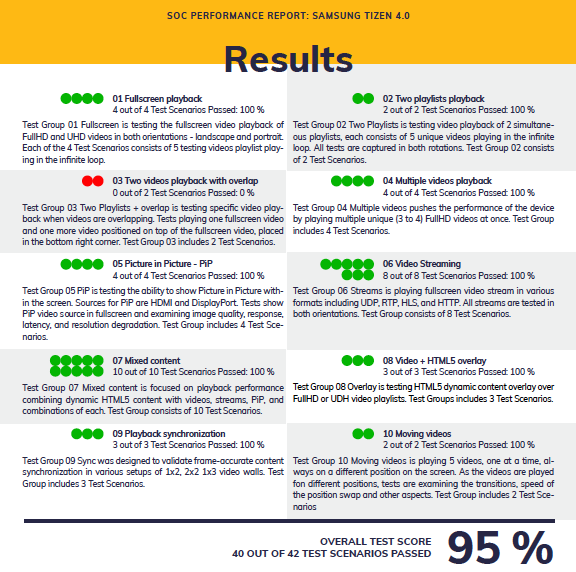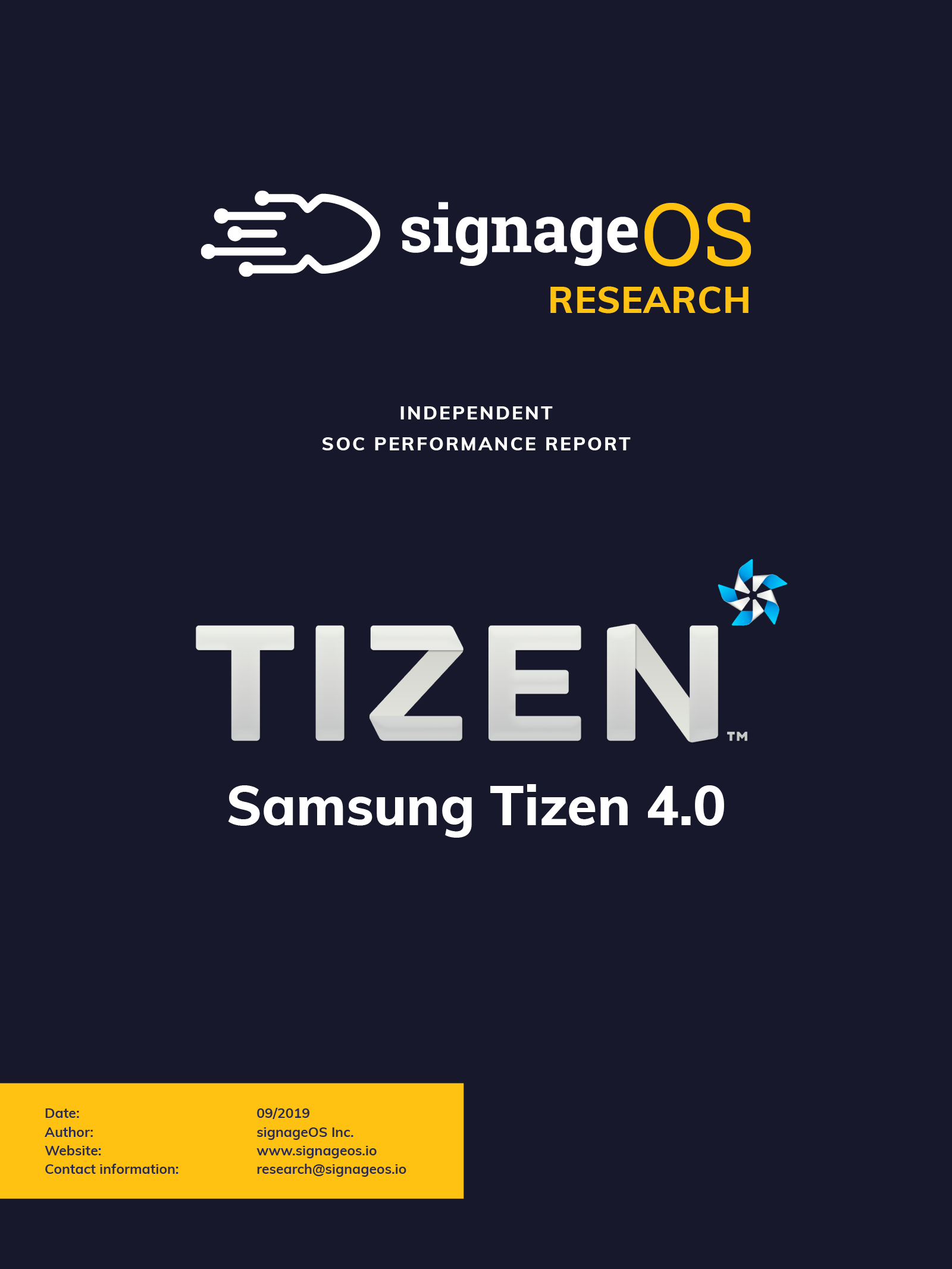
SignageOS Launches Benchmark And Testing Center For System On Chip Devices
October 7, 2019 by Dave Haynes
The team at signageOS, the US/Czech company that has written middleware to bridge CMS software and system on chip media players, has started a research center that tests and benchmarks the wide variety of available devices.
The first report out of the signageOS Research Center focused on “smart” digital signage displays running Samsung’s SOC hardware and Tizen 4.0 operating system.
The intent is to do the same for other smart displays, like LG’s webOS series and the variety of manufacturers who have embedded system on chip processors in their displays and got some flavor of Android running on them.
The business model of signageOS is to stay relentlessly on top of the steadily shifting capabilities and software versions of all the SOC and embeddable microPC options out there for commercial displays, and provide cloud-based middleware software that makes it fairly painless for CMS companies to support those options, via APIs. It means a company that’s focused, let’s say, on Linux-driven PCs can get their CMS working, as well, on “smart” displays (to get a deal or make a client happy), without having to divert off the R&D roadmap for several months.

I’ve seen the first report and it is very thorough, running a pair of reference displays through a diverse set of tests designed to assess performance attributed and capabilities. The reports are independent and not initiated or bankrolled by the manufacturers, so if someone downloads the Tizen report and immediately sees a big Tizen logo, that’s not your clue that this is advertorial.
I’ve told the signageOS guys the optics of that big logo may be a problem, but feedback from the ecosystem will, I suppose, determine who’s right there.
“There has been a lively discussion around device performance for many years in the digital signage industry,” says Stan Richter, CEO of signageOS. “For the most part, there has never been publicly available supporting evidence to validate the opinions expressed by opponents and supporters of media players or System-on-Chip displays. signageOS has decided to take the lead to test and benchmark.”
The company says:
Further studies and reports will be produced on all relevant performance metrics for the most popular hardware in the digital signage industry. Access the detailed report as well as subsequent reports and studies by subscribing at signageos.io/research. Our partners & subscribers will have the opportunity to utilize resources such as:
- Performance results
- Test cases
- Test scenario descriptions
- Video recording evidence (including slow motion, high-resolution video captures)
- Testing videos
- HTML5 content
- Source codes for HTML5 players/Applets used for testing
- Further signageOS commentary on results and implications
The signageOS Research Center aims to push the limits of innovation by analyzing and reporting on accurate information, independently gathered and tested for all digital signage hardware and software.
An i7 Windows box and a BrightSign player were used as non-SOC benchmarks for the test.
What the testing found was that, in pure terms, Samsung’s smart displays have unsurprisingly come a long way in six years (since first launched) and are now quite capable – getting a 95 score out of 100 for playing out video. However, the two test displays did not do as well on HTML5 testing, scoring 69. As the testers note in findings, HTML5 handling is increasingly important as end-users and solutions providers try to save time and cost, and stay current, by relying on dynamic data and visuals.
I worked with the guys in Prague on an update to a special report on SOC smart displays late last year, which include an early version of testing. The team there is very laborious, and definitely knows the ins and outs of this technology, both on the hardware and software side.
These research reports are a good exercise to have out there, and important for the ecosystem. Most of the display manufacturers have cut over a portion, or almost all, of their displays to SoC, and they are now widely deployed. I have spoken with software companies that do 70% and more of their business now with SOC displays, with PCs and dedicated boxes only rarely deployed.
But despite this level of adoption, there are still skeptics and flat-out detractors out there who worry about performance, security, data privacy and hitching one’s business fortunes to a proprietary system.
Real Digital Media’s Ken Goldberg has been among the most vocal detractors. This is his tongue in check tweet from April 1st.
The reports are intended to be free and you can fill out a form here to get the Samsung report.
We’re working out ways to make the ongoing reports and an archive available both through signageOS and Sixteen:Nine. More to come there.



So I am simply a homeowner who would like to employ digital signage in a ongoing project in my home (seen in the website link) which currently involves a single commercial portrait mode TV and would like to add a second portrait mode TV to make a
video wall (only two TVs so I guess it is still considered a wall?). I have no clue how to combine these two TV’s into a wall, how to coordinate various video inputs from multiple media players, and how to manage audio output from the various media players and other devices to a single pair of speakers and pair of subwoofers. I am having difficulty in finding consultants who can help a homeowner on a vary small project which nonetheless involves similar technology to that in large projects.